The splendidly vivid, non-narrative performance by the National Dance Company of Korea has travelled many thousands of kilometres to join us, while the new premiere by Artus whisks us off to the Far East on the wings of the wind. The two productions meet in the middle: Sagunja and Tai Chi Chuan prepare to captivate their audiences at the Budapest Spring Festival.
Sagunja: the “four noble men”, or, in other words, the four noble plants, is a favoured motif in traditional Korean painting. In East Asian culture, spring is represented by plum blossoms, summer by orchids, autumn by chrysanthemums, and winter by bamboo. Just as ink leaves a mark black as midnight on snow white paper, each flower is closely connected to its respective season.
The Scent of Ink, premiered by the National Dance Company of Korea in 2013, and on tour ever since, was inspired by this tradition of painting. With their dynamic brushstrokes, choreographer Yun Sung-joo and designer Jung Ku-ho, have created a performance that offers an exceptional visual and acoustic experience. The company was founded in 1962, and like many of its earlier premieres, this too combines Korean tradition and the challenges of the modern world. The production presented at Müpa on 18 April will be a genuine “tableau vivant”, characterized by harmony, elegance, and virtuosity.
Make dance a part of everyday life!
Wind Gate was shown recently at the Millenáris Park, in the National Dance Theatre’s newly inaugurated 8000m2 building that houses ballet studios, dressing rooms, and offices; but most importantly, now, up to five hundred people can be seated for dance performances at once. “In addition to the main stage, there is a chamber hall, and the studio stage is a two-thousand tonne cube floating over our heads in the vestibule. Taking into consideration the extreme physical demands made on dancers, the rehearsal rooms have special heating systems, while the pinewood dance floor of the stage expressly protects and supports our artists,” director Péter Ertl explained, when asked about the construction challenges. The new National Dance Theatre operates as a living space: “We welcome visitors not only in the evening, but during the day too. Our goal is to bring dance closer to everyone.”
The everlasting story of the four seasons unfolds before our eyes from the motif of the four flowers; using images of great plasticity, it relates to us the unity of the universe and how man is a part of nature. After the opening dance of the noble men, the charming plum blossom appears, set free from the captivity of winter, coming to life on the breath of spring. The orchid, fragrant and colourful in the depths of the forest, is the herald of summer. Autumn is represented by the chrysanthemum, which flowers until the beginning of the winter, symbolizing the perseverance and stamina of the noble man. Bamboo, splendidly green even in snow and ice, becomes the equivalent of a solid character.
The performance has no narrative: the images, colours, and moods take shape in a minimalist space, with unique, vibrant costumes, while traditional Korean melodies can be heard. The production designer, Jung Ku-ho, links the heritage of the past with the visual world typical of our time, thus emphasizing the depth of Korean dance. According to choreographer Yun Sung-joo, the work is a contemporary piece with traditional foundations.
“In Scent of Ink […] the whole body is breathing […]. I hope the beauty of empty space as well as the aesthetics of movement in stillness will arouse an echo in the hearts of the audience.”
Tai Chi Chuan, a traditional Chinese martial art, is familiar to many in Hungary, and is especially so to the audiences who frequent the performances of Artus, founded in 1985. Wind Gate, premiered on 15 April at the National Dance Theatre, was directed and choreographed by Gábor Goda, who leads the company. He says,
“To us, Tai Chi Chuan is not just a martial art, but a system of motion and composition made up of given movements in perfect harmony with nature, which, among other things, helps us to get a sense of how we can live in harmony with our environment.”
When I asked about his inspiration for the new piece, he explained that the premiere was preceded by a creative process that lasted more than a year.
“The piece demanded a lot of time, and a determining moment arose when I understood why I hadn’t been able to truly capture the essence of the topic for a long time: after all, how can one grasp the wind? There were fateful moments too: I travelled to Taiwan to study the connections between Tai Chi Chuan, nature, and art. In a nature reserve, I happened upon a plaque in the middle of nowhere that bore only the words, WIND GATE.”
Many years ago, a critic described Gábor Goda as an archaeologist of theatre: only “outdated” things, not necessarily fashionable today, are in the forefront of his artistic interest.
“There are important, fundamental questions which we are daring enough to ask when we’re young, and then, though we find no answer, they are forgotten anyway – life, work, and our troubles whisk us away from them. I, however, am still curious about who we are and how our world works, and our performances can be interpreted as stations of thought about these questions. In Drip Canon, we considered humanity as a unit, and in Swarm we were interested in how our decisions are made. In Wind Gate, we go further, as we investigate the place where thoughts and feelings dwell inside us. Wind gate is a term that the Chinese use to denote a certain point in the body that is spiritually aired with breath, where the body becomes refreshed and cleared. Consciousness and wind. Both are unusual, intangible phenomena: things we can never see; only their effect can be perceived.”
Author: Tamás Jászay
This article was first published in the BSF Magazine.
April 18 | 7 pm
Müpa Budapest – Festival Theatre
National Dance Company of Korea: Scent of Ink
Choreographer: Yun Sung-joo
Director, production design: Jung Ku-ho
Partner: Korean Cultural Center
April 15 | 7 pm
National Dance Theatre
Artus – Goda Gábor Company: The Gate of Wind – premiere
Performed by: Tamás Bakó, Szilvia Izsák, Zita Mayer, Zoltán Mózes, Csilla Nagy, Henriett Szalay
Featured martial artists: Erika Szalkó, Zsuzsa Szalkó, Etelka Szeghalmi
Featured musicians: Zsolt Bartek, György Philipp
Music: György Philipp
Lyrics: Ákos Fodor, Gábor Goda, László Krasznahorkai, Seneca, A. A. Milne
Production design: Ferenc Sebestény, Gábor Goda
Costumes: Kriszta Lőrincz, Antal Bodóczki
Lighting: Gábor Kocsis
Creative technology: Gábor Papp, Gáspár Hajdu
Choreographer, director: Gábor Goda

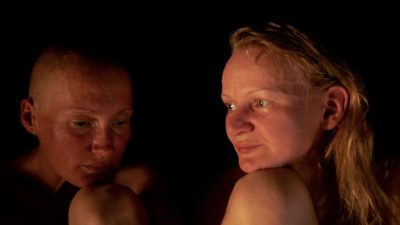
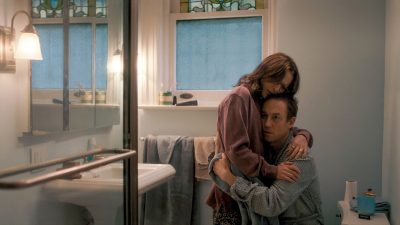

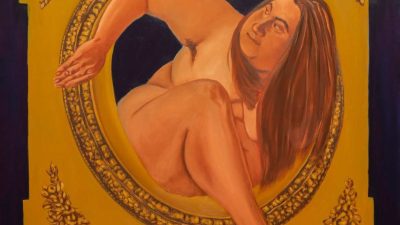
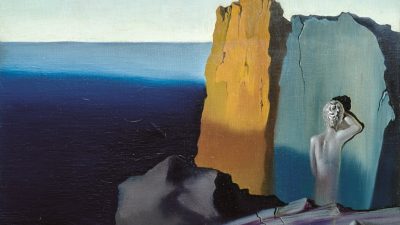
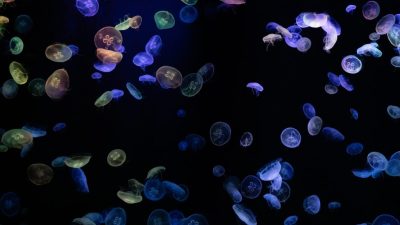


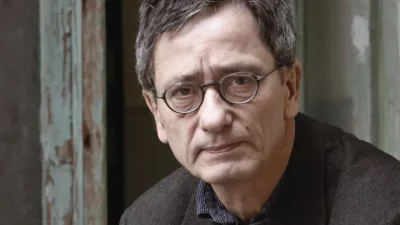



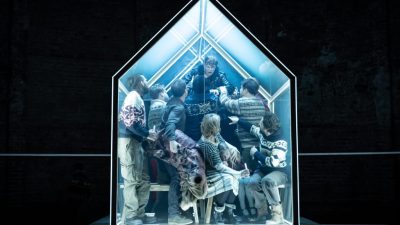






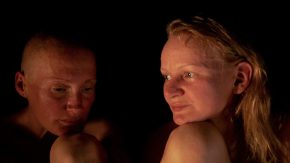


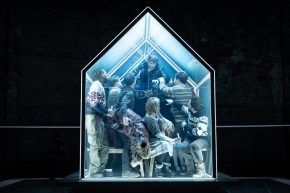


Comments